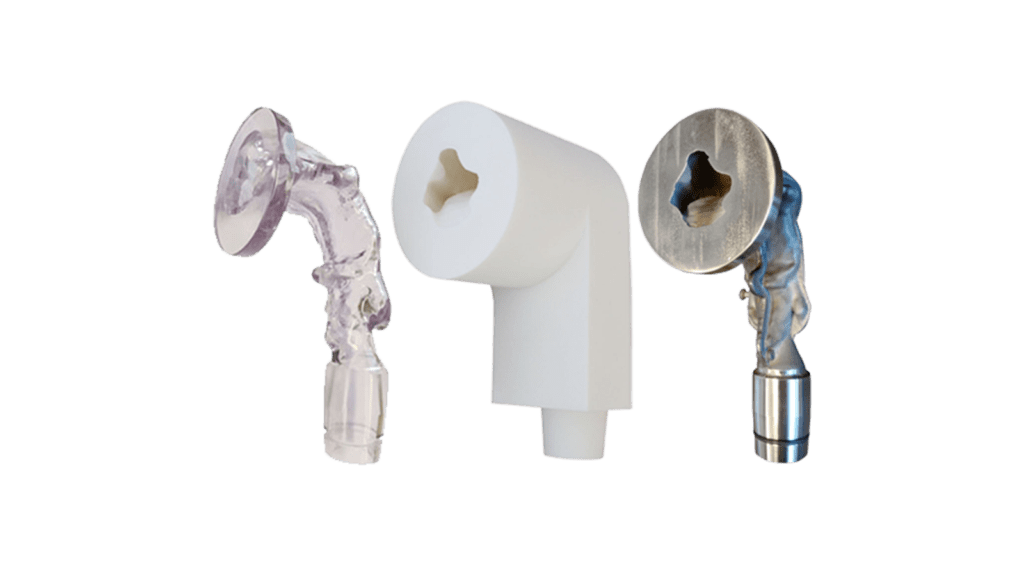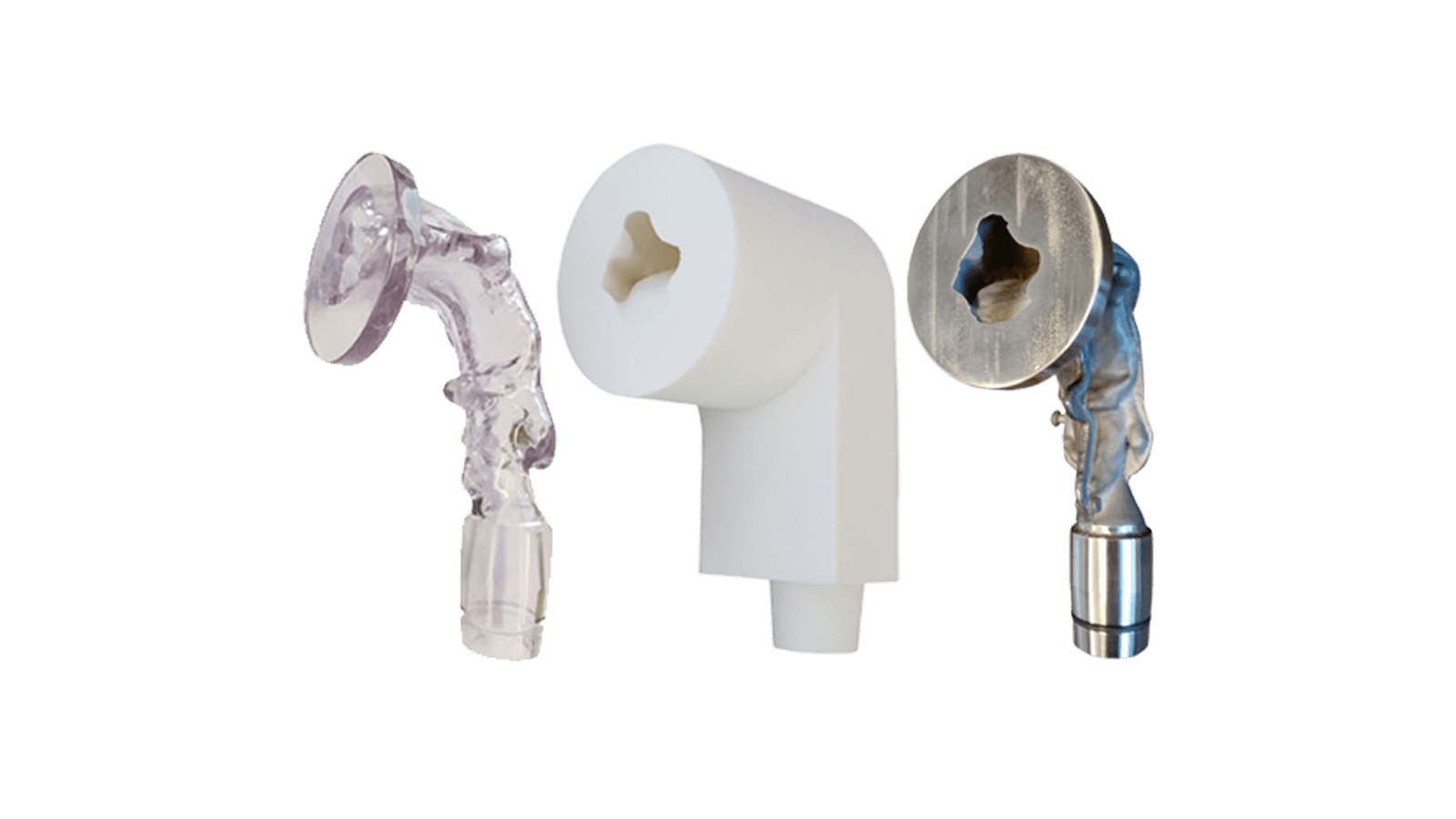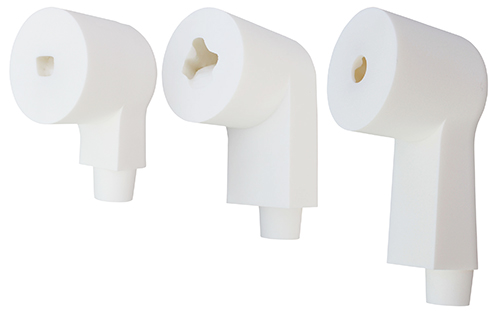Anatomical throat models – OPC throat models
Emmace offers an anatomical throat concept that enhance the prediction of the in-vivo properties and behavior of inhalation products.


Our anatomically realistic throat models
Three anatomical throat models (small, medium, and large) were developed by a consortium (OPC) consisting of AstraZeneca, GlaxoSmithKline and Sanofiaventis1 and are commercially available to the inhalation community by Emmace.
The geometry of the models originate from MRI (Magnetic Resonance Imaging) studies of adults’ oropharynx part at inhalation maneuver. The three models were selected based on their dose filtering properties performed on different products (pMDI, DPI and Nebulizer).
Anatomical throat models correlate in vivo
In vitro in vivo correlation (IVIVC) studies2 showed later on that the dose that passes these throat models correlated with the lung dose that was found in in vivo lung deposition studies. Moreover, by analyzing and comparing the aerosol doses that survive the small and the large throat models, the “lung dose” variability in an adult population can be estimated.
The throat models can be used with cascade impactors, laser diffraction instruments, particle counters or combined with an integral filter downstream the model, which offers a case by case flexibility.
1) https://doi.org/10.1089/jam.2007.0566
2) http://online.liebertpub.com/doi/abs/10.1089/jamp.2012.0986

Three anatomical throat models (small, medium, and large).

The anatomical throats are available in three different fashions. From left: a transparent design for a visual assessment of aerosol motion and deposition, a durable design for repetitive, standard use in lab testing (white model), and a metal version. All designs have the same interior geometry.
Analytical testing using anatomical throat models
Emmace also offers analytical testing using these throats as a service on a CRO basis.
Using these anatomical models during inhalation experiments offers multiple ways to improve the product development:
- Predict your product’s performance in a clinical situation: Combination of the three throat models with a set of clinically relevant flow profiles gives a good prediction of how your inhalation product will behave in a clinical situation.
- Test how inhaler behaves when patients handle it: Inhaler handling robustness testing – predicts the effect on lung dose of inhaler vs. e.g., mouth position angle, distance from tongue position, or dose loading procedure.
- Predict the effect of add-on devices: How add-on devices, such as spacers affect lung dose
- Design your clinical studies: Data from anatomical throat models are useful input when designing clinical studies, including selection of dose strength and number of doses. Data from OPC throat testing can also be used to understand clinical data that are “unexpected”.
- Rank different device prototypes: Excellent screening tool in your daily development work; rank different device prototypes or formulation concepts by simply measuring the dose that survives the models using a single filter downstream the throat model.
- Compare your product/prototype versus competitors or reference products on the market.
The anatomical throat models are manufactured according to the data from the OPC work and are made as single solid bodies, which reduces the risk for leakages of both air and solubilized drugs. Customized adapters for inhaler adaptation are manufactured upon request.


